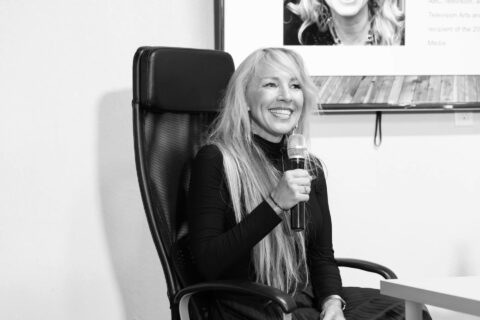
For the last few years, I’ve been a partner at Founder Equity, an early-stage fund and incubator. Our structure is different from most funds in that we make heavy investments in talent, we have no fees or traditional carry, and we target companies with prospects for early liquidity.
“Venture Capital is one of the most important sources of risk capital around. Limited Partners (LPs) commit money to venture capital funds managed by General Partners (GPs). In aggregate, US GPs put roughly $25 billion to work every year. That might sound like a lot of money, but it’s less than 0.2% of US GDP.”
Raising money for a fund was new for me, and the process has been enlightening, to say the least. Here’s what I’ve learned so far:
1. Fundraising is a slog
When you raise an angel or venture round, you know where to find potential investors. In any given town, most people know who the players are, and you can hit the coasts and get meetings pretty easily.
But the hunt for limited partners is different. They’re out there, but they don’t advertise nearly as much. Their investment criteria are often opaque, and the number and variety of players is immense. You have high-net-worth individuals, family offices, registered investment advisors, institutions and more.

Raising as a startup, you know what you’re dealing with for the most part. The fund will have an investment thesis, and deals will be evaluated based on the team, market size, product, business model and traction.
For LPs, the math is different. These are passive investments for them and usually occupy a small portion of their overall assets. Many of them have less exposure to early-stage tech and are used to evaluating larger deals, real estate, etc. The hold periods are also typically longer than their other deals, and the outcomes are much more binary than what they’re used to.
As such, many people won’t be interested when you get started. Either the industry isn’t appealing, the whole tech sector makes them uncomfortable, or the lack of solid visibility into return on capital doesn’t jive with the rest of their investment strategy. Unfortunately, the only way to find this all out is to meet with lots of people. Over time, you begin to develop relationships and learn who cares about what. But it definitely takes time.
2. First-time funds are even harder
If it’s your first fund, the difficulty level increases considerably. It doesn’t matter if you’ve been involved with successful exits, if you’ve been a partner at a venture fund before, or if you have neat credentials, like being a professor at a university. If this is your fund’s first go, it’s going to be a challenge.

Many people or entities that invest in your space and like your thesis will balk, and wait to see how you do with the first fund. And many of the people who do invest will invest less than they otherwise would to see if you can prove your model. This means more meetings, smaller average investment size and many more LPs. Not ideal, but hard to avoid.
3. Some LPs work better than others
High-net-worth individuals have been our best source of LPs. While some have made money in other fields, many have an interest in tech. Those involved in a successful tech exit two or three years ago are a great source of LPs because they have funds and can function as advisors and mentors for your fund companies.
Both groups like the benefits of portfolio theory and that you’re managing the investments for them so they don’t have to be so active. And in our case, they loved that 20 percent of the fund wasn’t swallowed up in fees, and instead deployed to grow the companies.
Family office relationships can also be a huge win. We recently had a $12 billion multifamily office invest, with some of the largest family offices in the U.S. actively considering. But getting into family offices takes a lot of work, and they definitely want to see the progress of the fund.

Private bankers can also be a good source of LPs, because they can act as a gateway to high-net-worth-individuals. Build long-term relationships with a small number of them. They’re happy to share the right deal with their clients because it adds value to their relationship and presumably grows their client’s assets.
It can also be beneficial to have a relationship with the right registered investment advisor or broker. If you keep them excited, give them the right materials, and are willing to hop on some calls with prospective investors, you can dramatically increase the number of potentials in your funnel.
4. Fundraising is not for the faint of heart
Candidly, fundraising is the hardest thing I’ve ever done. Although we’ve seen considerably more interest from larger LPs, it was a long road to get there.

I’m historically an operator, and I love getting my hands dirty with fund companies, but fundraising is every bit as essential to the success of a company as working on the product. Our investors have many ideas, and they introduce us to talent we otherwise wouldn’t be exposed to. They are our biggest advocates to their own networks.
Starting your own fund
If you have dreams of starting your own fund, I’d strongly suggest that you layout the framework now. Network with the people and organizations you’d like to eventually raise from. They’re not the same people everyone else in the startup community is talking to.
Plan for at least 18 months of fundraising, and don’t get discouraged. With a strong investment thesis, a rational plan and enough pitch meetings, you’ll get there.
This article has been edited.
Sean Johnson is a partner at Founder Equity and Digital Intent, and loves helping companies build and grow innovative new digital products. He’s a professor of digital marketing at Northwestern University’s Kellogg School of Management. Connect with @intentionally on Twitter.
© YFS Magazine. All Rights Reserved. Copying prohibited. All material is protected by U.S. and international copyright laws. Unauthorized reproduction or distribution of this material is prohibited. Sharing of this material under Attribution-NonCommercial-NoDerivatives 4.0 International terms, listed here, is permitted.





